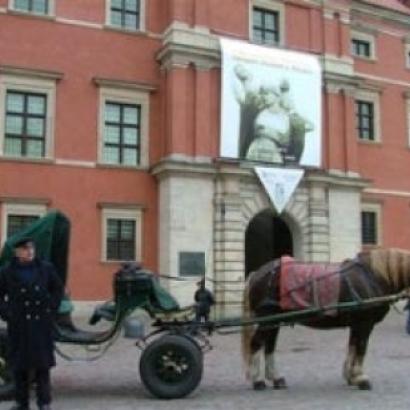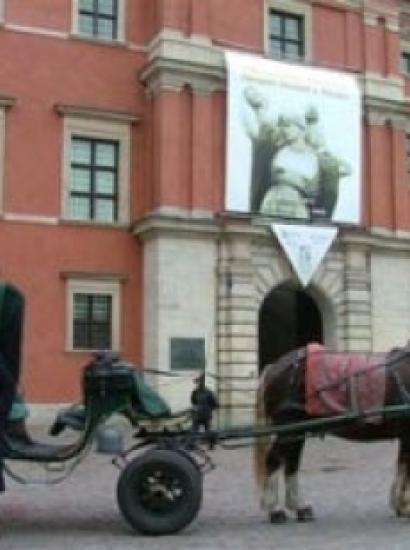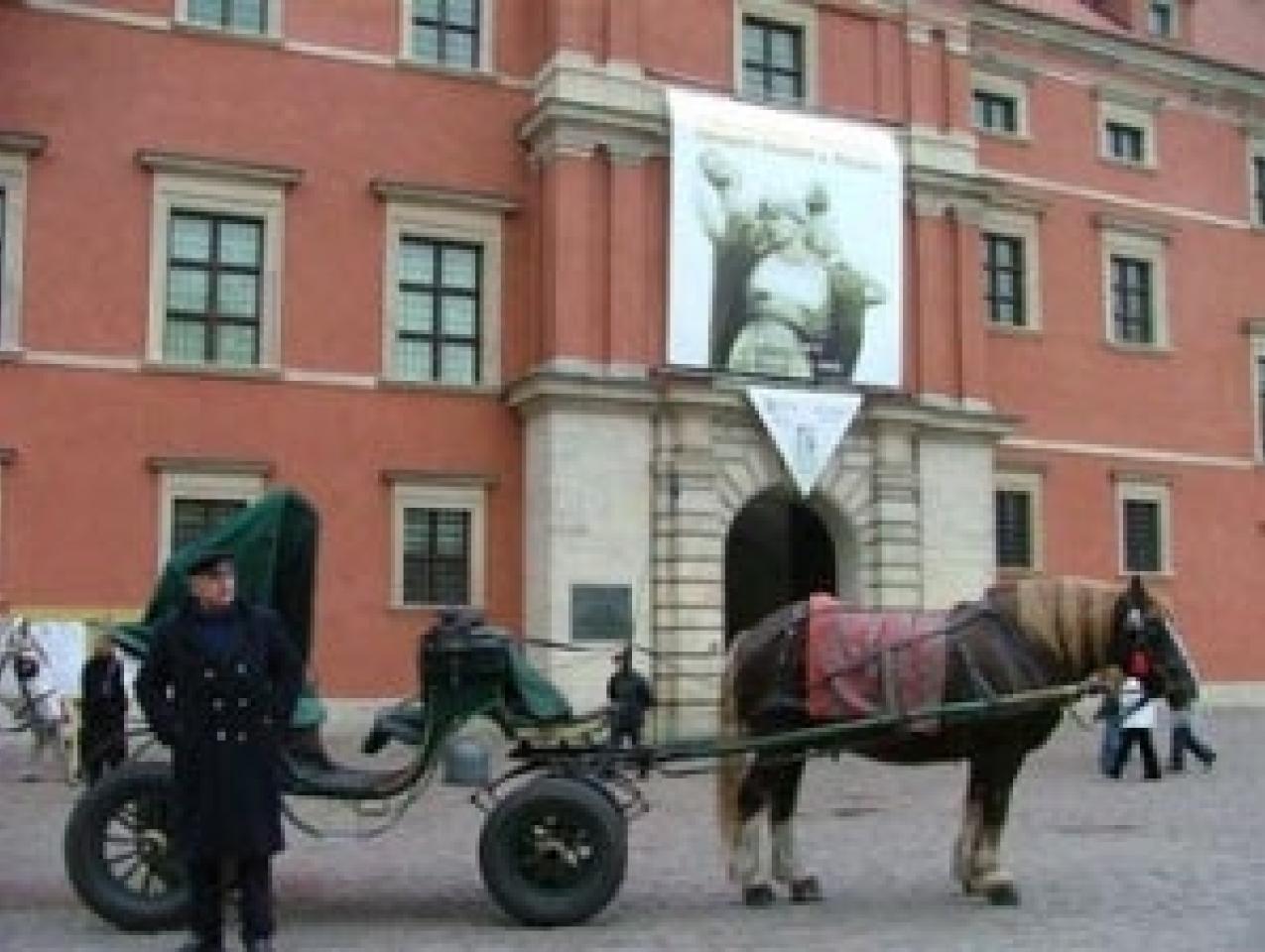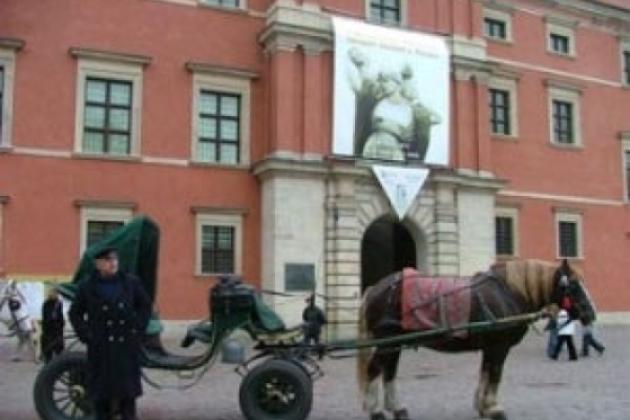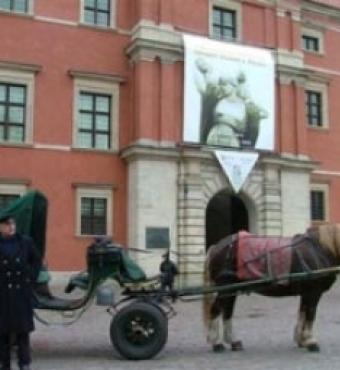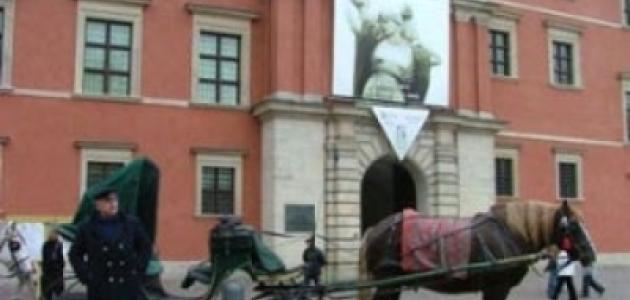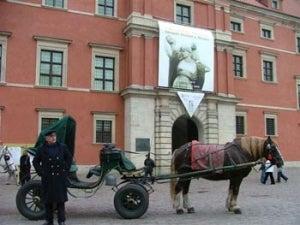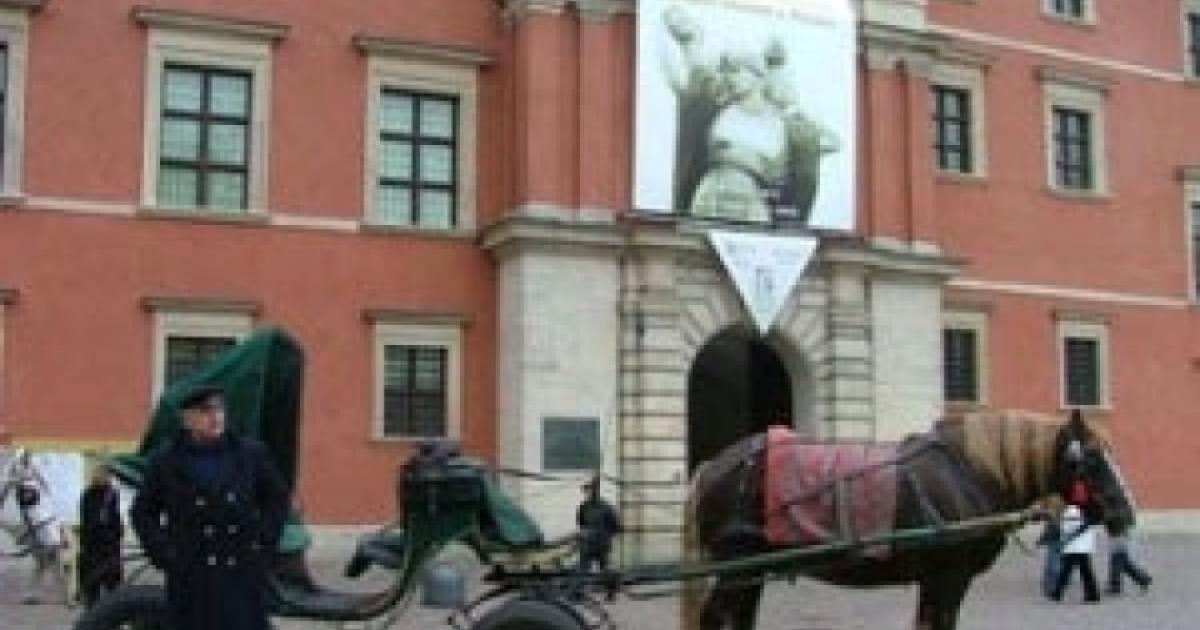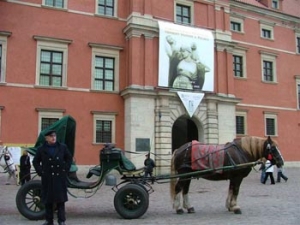
Photographs from the exhibition "An American Friendship: Herbert Hoover and Poland," which the Hoover Institution opened in the Royal Castle in Warsaw on November 15, 2004.
On November 15, 2004, the Hoover Institution opened the exhibition "An American Friendship: Herbert Hoover and Poland" in the Royal Castle in Warsaw. The exhibition, containing many items from the Hoover Institution Archives, illustrates Herbert Hoover's commitment to the survival and the well-being of Poland throughout his life as a private citizen, statesman, president, and, above all, dedicated humanitarian.
During and after World War I, Hoover directed the largest relief operation ever mounted in Europe, during which millions of Europeans were saved from starvation and death. In the first months of 1919, tens of thousands of rail cars full of U.S. food had left Gdansk on their way to other Polish cities. Within six months, more than $50 million worth of food had been delivered. In 1919 alone, the program fed more than 1.5 million children. After 1920, Hoover increased that number to 2 million and expanded the number of kitchens to ten thousand. For almost four years following the war, half a billion meals were fed to the hungry and starving of Poland.During World War II, Hoover led another organization, the Commission for Polish Relief, which again alleviated the sufferings of hundreds of thousands of Polish people.
After the war, in 1946, Hoover drafted a new relief plan. For the next thirty years, Poles born between 1946 and the 1960s benefited from that assistance.
For decades, Hoover was to the Poles and to millions of Europeans a symbol of faith, charity, and compassion, helping where there had been no hope and life seemed unbearable.
As a result of this exhibition, Polish authorities are restoring the monument, which had once stood in Warsaw, honoring Herbert Hoover and the United States.
Other major Polish cities, as well as museums in Chicago and New York, have offered to host the exhibition before it returns to California in early 2006.
The Warsaw exhibition and accompanying catalog were made possible by a generous gift from the Taube Family Foundation. The exhibition will travel to four other cities in Poland thanks to generous gifts from Henrietta Fankhauser and from the American Embassy in Warsaw.
Visitors entering the Hoover Tower are greeted by a statue of Thaddeus Kosciusko, the Polish American general who volunteered to serve in the American War of Independence (1775–1783). The Polish government gave this miniature copy of the original monument (seen standing outside the Royal Castle in Krakow, Poland) to Herbert Hoover in gratitude for his directing charity missions to Poland under the auspices of the American Relief Administration following World War I.
Hoover's role in Poland's twentieth-century politics is comparable to that of Thaddeus Kosciusko's to American history. In 1918, Hoover went to Poland to bring freedom and prosperity and to strengthen its newly regained independence. Poles expressed their appreciation in many ways. In 1922, they erected a monument to him in Hoover Square in the most prominent part of Warsaw that portrayed two women holding children as a symbol of life.
That monument was destroyed during the Second World War. In 1946, during his next humanitarian mission to Poland, Hoover visited what was left of it. Under Poland's communist regime (1945–1989), the square's name fell into disuse. In 1992, a stone memorial was erected and dedicated and the square returned to its prewar name, Skwer Hoovera.
A model of the monument was presented at the Warsaw Royal Castle during the exhibition "An American Friendship: Herbert Hoover and Poland." Warsaw's mayor declared that he will restore the monument to its original location and include it in restoration plans for the year 2006.




